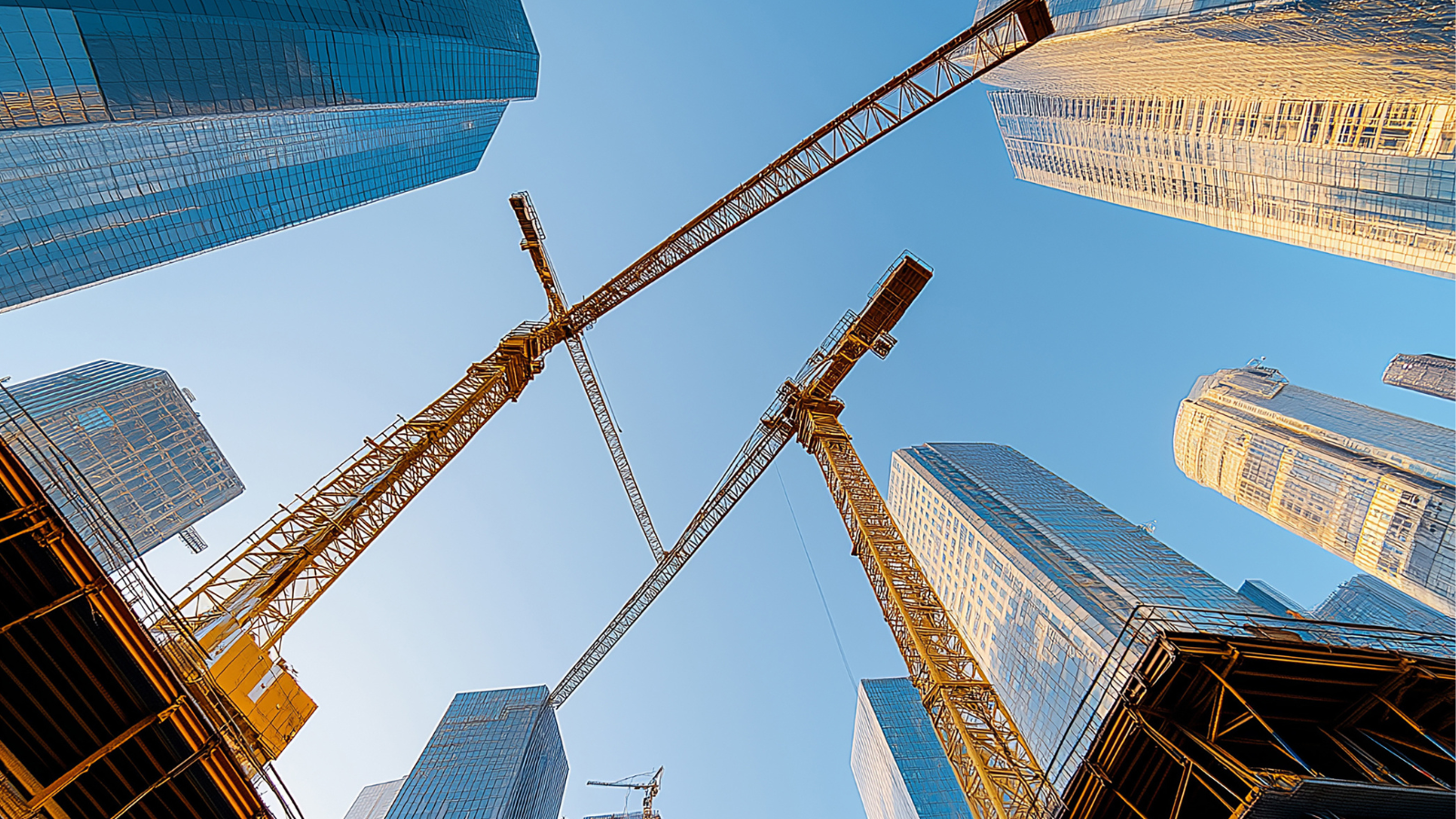- Courses
- GS Full Course 1 Year
- GS Full Course 2 Year
- GS Full Course 3 Year
- GS Full Course Till Selection
- Answer Alpha: Mains 2025 Mentorship
- MEP (Mains Enrichment Programme) Data, Facts
- Essay Target – 150+ Marks
- Online Program
- GS Recorded Course
- Polity
- Geography
- Economy
- Ancient, Medieval and Art & Culture AMAC
- Modern India, Post Independence & World History
- Environment
- Governance
- Science & Technology
- International Relations and Internal Security
- Disaster Management
- Ethics
- NCERT Current Affairs
- Indian Society and Social Issue
- NCERT- Science and Technology
- NCERT - Geography
- NCERT - Ancient History
- NCERT- World History
- NCERT Modern History
- CSAT
- 5 LAYERED ARJUNA Mentorship
- Public Administration Optional
- ABOUT US
- OUR TOPPERS
- TEST SERIES
- FREE STUDY MATERIAL
- VIDEOS
- CONTACT US
Chennai-Vladivostok Eastern Maritime Corridor Operational
Chennai-Vladivostok Eastern Maritime Corridor Operational
20-11-2024
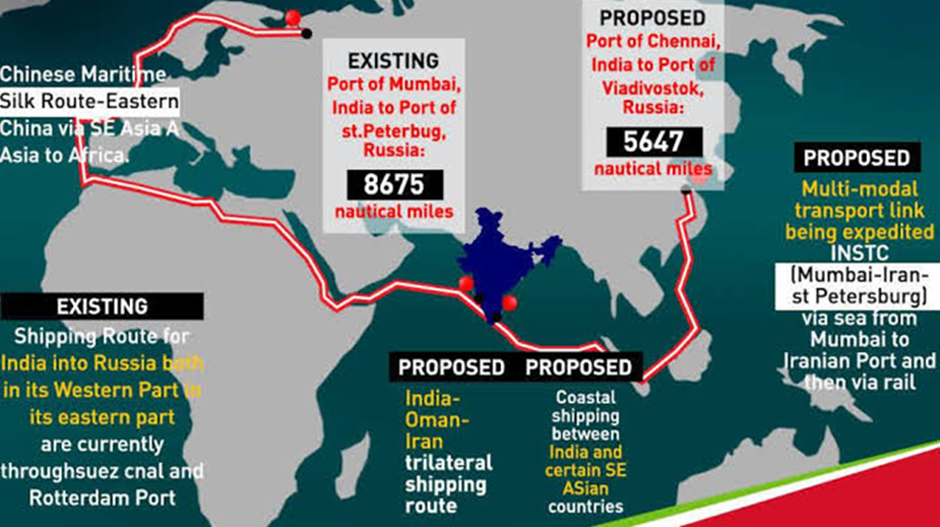
- The Chennai-Vladivostok Eastern Maritime Corridor became operational by the end of 2023, with cargo flows including oil, food, and machinery.
- Minister of Ports, Shipping, and Waterways Sarbananda Sonowal announced this development on November 18, 2024, emphasizing its importance in reducing shipping time and distance between India and Far East Russia.
- He also mentioned that India and Greece would collaborate on the India-Middle East-Europe Economic Corridor (IMEEC) announced at the G20 summit in 2023.
- He outlined a vision for India to become the best maritime nation globally by 2047, with improvements in various maritime sectors like port operations, cargo handling, ship ownership, shipbuilding, and maritime legislative reforms.
- He shared this vision at the ‘Sagarmanthan: The Great Oceans Dialogue’, a thought leadership summit organized by the Ministry of Ports, Shipping, and Waterways in collaboration with the Observer Research Foundation.
Key Developments:
-
Chennai-Vladivostok Maritime Corridor:
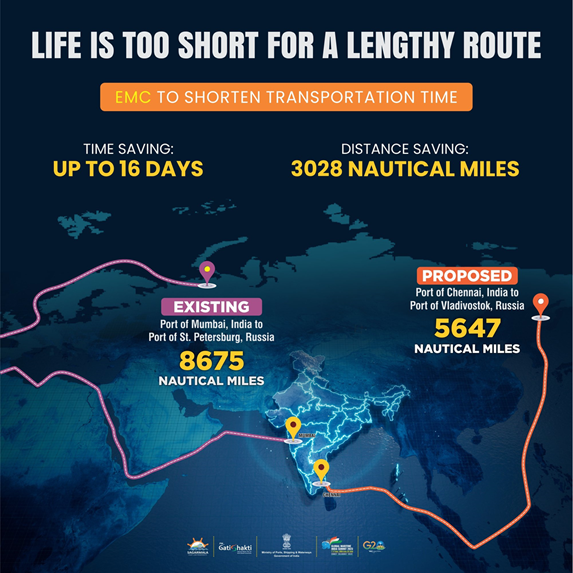
-
- Operational Since End of 2023: The corridor is now functioning and handling crude oil, food, and machinery.
- Time Reduction: The Chennai-Vladivostok corridor has reduced transportation time by up to 16 days, from 40 days to 24 days.
- Distance Reduction: The travel distance between India and Far East Russia has been reduced by up to 40%.
- Ports Involved: The corridor connects key Indian ports such as Chennai, Paradip, and Vizag, along with the Bay of Bengal ports.
-
India-Middle East-Europe Economic Corridor (IMEEC):
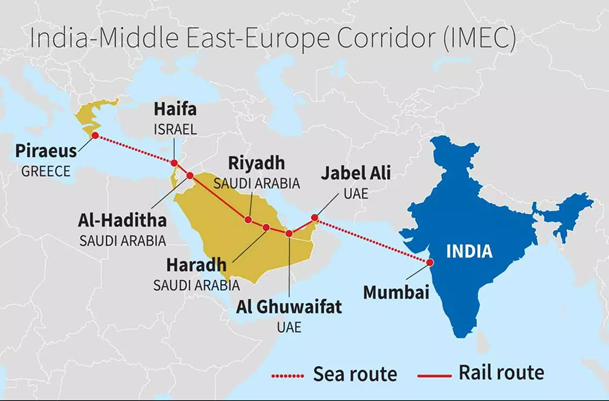
-
- Announcement: The IMEEC was announced during the G20 summit and links India with the UAE, Saudi Arabia, Jordan, Israel, and three European countries: Italy, France, and Greece.
- Total Distance: The IMEEC corridor, when completed, will span over 4,800 km with both railway and sea routes.
- India and Greece Collaboration: India and Greece will work together on this project to enhance connectivity between Asia and Europe.
-
India’s Maritime Vision 2047:
- Ambition: India aims to become a top maritime nation by 2047 across all verticals, including port operations, cargo handling, ship ownership, shipbuilding, and maritime technology.
- Port Capacity: By 2047, India aims to have a port handling capacity of 10,000 million metric tonnes per year.
- Strategic Routes: India will leverage key international trade routes, including IMEEC and INSTC (International North-South Transport Corridor), to enhance its global maritime trade presence.
- The International North–South Transport Corridor (INSTC) is a 7,200-kilometer network of roads, railways, and ships that connects India, Iran, Azerbaijan, Russia, Central Asia, and Europe.
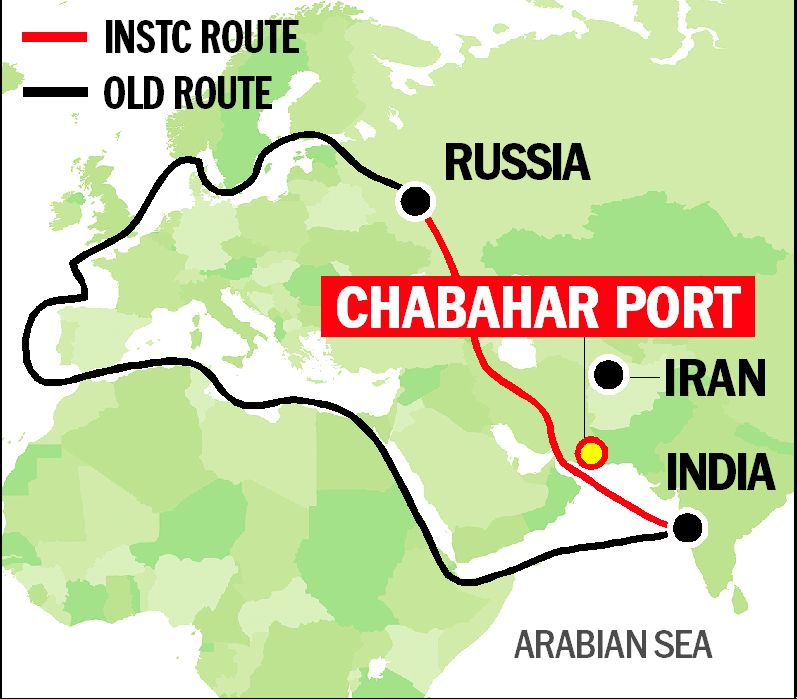
-
- Clean Shipbuilding: Focus will be on building ships powered by clean fuels such as ammonia, hydrogen, and electricity.
-
Policy and Infrastructure Reforms:
- Legislative Reforms: India has already passed several important legislations, including the:
- Major Port Authority Act
- National Waterways Act
- Inland Vessel Act
- Recycling of Ships Act
- These laws are designed to improve the efficiency and competitiveness of India’s ports, inland waterways, and ship recycling sectors.
- Two new bills, Coastal Shipping Bill and Merchant Shipping Bill, will soon be enacted to further boost coastal shipping, integrate inland waterways, enhance shipbuilding, and promote ease of doing business.
- Legislative Reforms: India has already passed several important legislations, including the:
-
Investment in Port Infrastructure:
- ₹80 Lakh Crore Investment: India has committed to investing ₹80 lakh crore to modernize port facilities, increase shipping capacity, and expand inland waterways.
- Key Projects:
- Vizhinjam International Seaport (Kerala): A major deep-water port project.
- Vadhavan Mega Port (Maharashtra): To enhance India’s capacity to handle large volumes of cargo.
- Galathea Bay (Nicobar Islands): Strategic port development in the Bay of Bengal.
Strategic Goals and Vision:
-
International Positioning in Shipbuilding:
- India aims to be among the Top 10 shipbuilding nations by 2030 and enter the Top 5 by 2047.
- This ambition supports the Atmanirbhar Bharat (self-reliant India) vision, seeking to revive India’s shipbuilding legacy.
- National Maritime Heritage Complex: The complex being built in Lothal will serve as a historical and technological center to promote maritime heritage and shipbuilding skills.
-
Sustainability and Clean Energy Goals:
- Green Shipbuilding: India is preparing to build ships powered by clean fuels, including hydrogen, ammonia, and electricity, to meet sustainability targets.
- Sustainability in Maritime Transport: By focusing on sustainable shipping practices, India seeks to minimize pollution, optimize efficiency, and improve resilience across the maritime industry.
-
Improvement in Port Efficiency:
- Turnaround Time: India has made significant progress in reducing turnaround times at ports.
- According to the World Bank’s Logistics Performance Index, turnaround time has dropped from 40+ hours a decade ago to 22 hours—a significant improvement, surpassing even advanced maritime nations like Singapore and the U.S.
-
Reforms to Facilitate Growth:
- New Legislation: The two new bills—the Coastal Shipping Bill and Merchant Shipping Bill—will promote coastal shipping, integrate inland and coastal waterways, and encourage shipbuilding and ship recycling.
- The revamped Major Port Authority Act and other legislative changes aim to improve governance, efficiency, and capacity of major ports in India.
Challenges and Regional Geopolitical Context:
- The IMEEC may face challenges due to the volatile geopolitical situation in West Asia, particularly the ongoing conflicts in Israel, Gaza, and Lebanon.
- However, the success of the Chennai-Vladivostok Corridor and other maritime projects remains a priority for India’s long-term strategic interests.
Way Forward:
- Strengthening India-Greece Ties: India and Greece’s collaboration on the IMEEC will play a crucial role in improving maritime connectivity between Asia and Europe.
- Continued Investment in Maritime Infrastructure: India must continue investing in port infrastructure and maritime connectivity projects such as the Vizhinjam Port, Vadhavan Port, and Galathea Bay to bolster its maritime economy.
- Focus on Sustainability and Clean Shipping: promoting green shipbuilding technologies and promoting the use of clean fuels will help India meet its climate goals and enhance its global maritime reputation.
- Maritime Legislative Reforms: The timely enactment of the Coastal Shipping Bill and Merchant Shipping Bill will be vital for integrating coastal and inland waterways, enhancing shipbuilding, and improving ease of business in the maritime sector.
Conclusion:
India’s vision for 2047 focuses on becoming the top maritime nation in terms of port operations, shipping, shipbuilding, and maritime policies. The operationalization of the Chennai-Vladivostok Eastern Maritime Corridor and the IMEEC, alongside substantial investment in port infrastructure, clean fuel shipbuilding, and legislative reforms, will help India realize its maritime aspirations. The country is on track to become a global leader in the maritime sector, with a robust sustainability agenda and improved port efficiencies.




